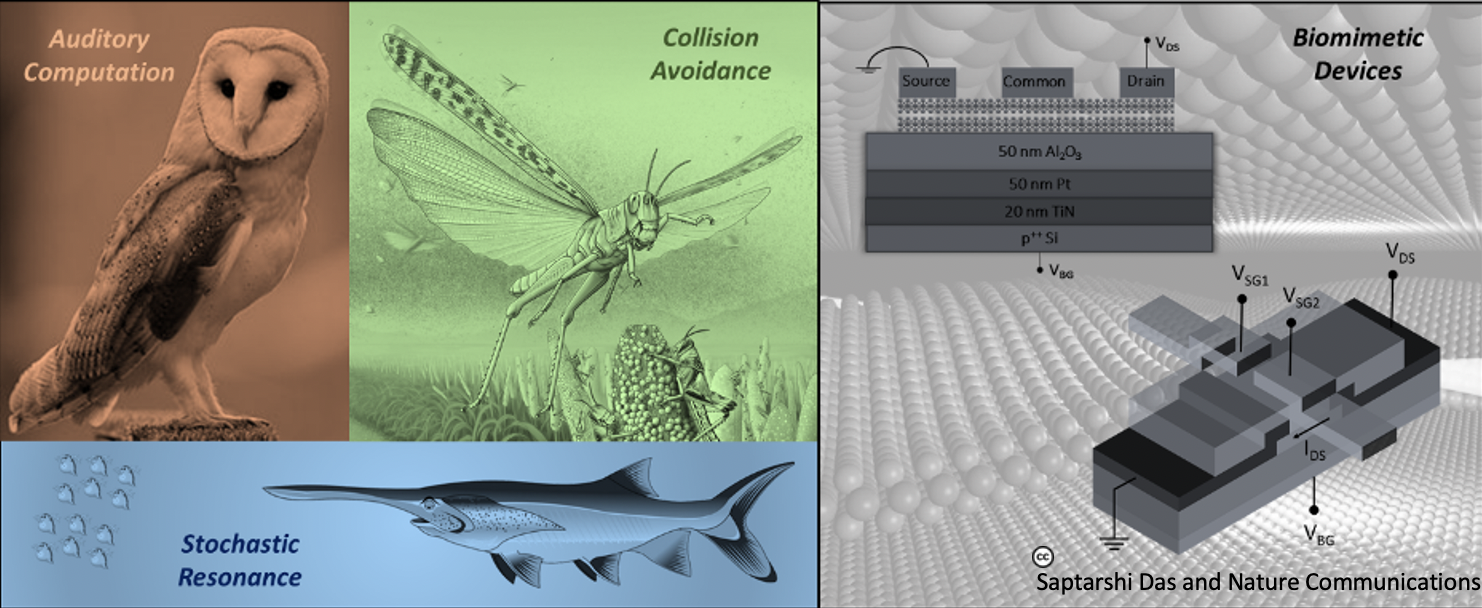
Novel Devices for Biomimetic Sensing and Computing
7th October 2020
Timing : 1 pm EST
For zoom link to the talks, please email mjgc@mit.edu with your institute email and mention affiliation
For a list of all talks at the NanoBio seminar Series 2020, see here
Saptarshi Das
Assistant Professor of Engineering, Science & Mechanics
Department of Engineering Science and Mechanics, Materials Science and Engineering, Materials Research Institute
Pennsylvania State University, University Park, PA, USA
Dr. Das was appointed as an Assistant Professor of Engineering Science and Mechanics (ESM) and member of the Materials Research Institute (MRI) and the Intercollege Graduate Degree Program in Materials Science and Engineering at Penn State University in January 2016. He received his B.Eng. degree (2007) in Electronics and Telecommunication Engineering from Jadavpur University, India, and Ph.D. degree (2013) in Electrical and Computer Engineering from Purdue University. Before joining Penn State, he was a Postdoctoral Research Scholar (2013-2015) and Assistant Research Scientist (2015-2016) at Argonne National Laboratory (ANL). Dr. Das was the recipient of Young Investigator Award from United States Air Force Office of Scientific Research in 2017. Das Research Group at Penn State leads a new multidisciplinary area of science, namely biomimetic sensing and neuromorphic computing inspired by the neurobiological architecture and neural computational algorithms found inside various animal brains allowing evolutionary success of the species.
Assistant Professor of Engineering, Science & Mechanics
Department of Engineering Science and Mechanics, Materials Science and Engineering, Materials Research Institute
Pennsylvania State University, University Park, PA, USA
Dr. Das was appointed as an Assistant Professor of Engineering Science and Mechanics (ESM) and member of the Materials Research Institute (MRI) and the Intercollege Graduate Degree Program in Materials Science and Engineering at Penn State University in January 2016. He received his B.Eng. degree (2007) in Electronics and Telecommunication Engineering from Jadavpur University, India, and Ph.D. degree (2013) in Electrical and Computer Engineering from Purdue University. Before joining Penn State, he was a Postdoctoral Research Scholar (2013-2015) and Assistant Research Scientist (2015-2016) at Argonne National Laboratory (ANL). Dr. Das was the recipient of Young Investigator Award from United States Air Force Office of Scientific Research in 2017. Das Research Group at Penn State leads a new multidisciplinary area of science, namely biomimetic sensing and neuromorphic computing inspired by the neurobiological architecture and neural computational algorithms found inside various animal brains allowing evolutionary success of the species.
